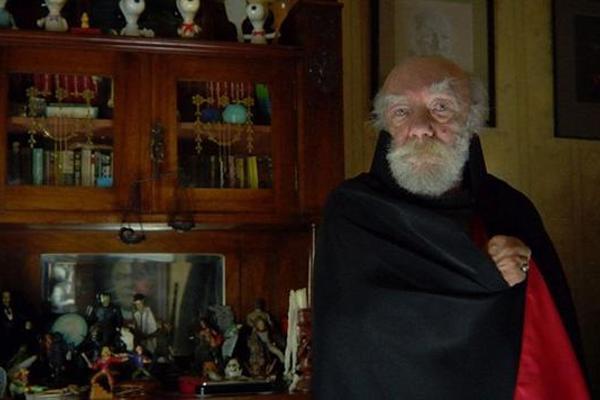Istanbul's Count Dracula and Turkey's vampire renaissance
ISTANBUL (AA)


Giovanni Scognamillo is planning to open his second exhibition of vampire paintings in the Beyoğlu neighborhood of Istanbul this year
From Nosferatu and Count Dracula to modern-day bloodsuckers in Twilight and Vampire Diaries the world-wide frenzy for the undead is insatiable. Now Turkey too is experiencing its own vampire renaissance - and AA met Istanbul's own real-life vampire to find out more.Giovanni Scognamillo, 85, lives in house-cum-vampire museum in the ancient Beyoğlu neighborhood of Istanbul, complete with cloak and other undead paraphernalia. By day an artist and cinema-history writer, by night Scognamillo - with his long, tapered black nails - is a self-described 'vampire'.
Scognamillo has been writing and researching the legendary creatures for decades. Although common in other European folk tales, the undead traditionally do not feature much in Turkey: "Vampire stories in Turkey are mainly adapted from other languages," he says.
Although vampire-related stories feature in a range of cultures from Eskimos in the Arctic Circle to the steamy climes of Brazil, much of the Oriental tradition has escaped their clutches. Even "One Thousand and One Nights," the marvelous book of East, doesn't mention vampires, says Scognamillo.
"We are the real vampires; we attribute our bad behaviors to vampires," he says.
The younger generation in Turkey has become fascinated in vampire-related culture especially after the Twilight series, the young-adult vampire-romance novels which sold more than 120 million copies worldwide with translations into at least 38 different languages.
Scognamillo, however, is not a fan: "I didn't watch the Twilight series because I love vampires; they are poorly treated in the movies," he sniffs.
But finding vampires in Turkey can be a job which would challenge even Van Helsing: Mehmet Bilal Dede, an Istanbul author of vampire fiction set in the Ottoman Empire says that although there are ogres and bogeymen in Turkish folklore "in our culture vampires are attributed to Western countries and Christianity."
Mehmet Bilal gives the example of myths about the 15th-century Romanian prince Vlad III - better-known as Vlad the Impaler - who is believed to have inspired the character of Count Dracula after legends accusing him of drinking the blood of defeated Ottoman soldiers.
"It's believed that he collected the blood in barrels and drank it. That's the information that led to the birth of the vampire legend," he says.
The first example of vampire stories in Turkish literature is Ali Rıza Seyfi's 1928 novel titled 'Kazıklı Voyvoda (Impaler Voivode).' The book was later filmed as Dracula in Istanbul (Drakula Istanbul'da) and is said to be a summary of Bram Stoker's famous novel.
"Turkish cinema still waiting for its vampire," says Dede adding that it's a mystery why the country's movie industry has not filmed its own homegrown vampire saga despite the undead being a rich source of drama.
Although vampires have great power they are vulnerable to daylight, making it almost impossible for them to have a "real" and "meaningful" relationship with human beings. Dede says this makes them a symbol of loneliness, an "other" figure.
"Instead of transforming old, grotesque and rough vampire stories, today's stories are written with aesthetic concerns and new approaches. As a result, attention has increased more than ever," Dede says.
More humane, conscientious vampire characters are taking the place of the old vampire-slaying yarns, he adds.
To find Turkey's vampires, one has to go back much further than the Twilight movies. A communications lecturer at Istanbul University, Dr. Esra Gulay Er Pasin says: "When we go back in time we can see different examples of vampire beliefs, not in Anatolia, but in different geographies where Turks lived."
Vampires, having only memory of their biological family, are ideally suited to question human beings' place in the universe, says Pasin.
"Vampires carry the unbearable weight of unknowing," she says.
Not all real-life vampires are as colorful as Istanbul's own Giovanni Scognamillo. In 2013 Turkish media reported the case of a traumatized 23-year-old soldier discovered by doctors to have an addiction to blood. Eventually diagnosed with Post-Traumatic Stress Disorder and Dissociative Identity Disorder doctors believed him to be the first case of "vampirism" in the country.
As for Istanbul's resident Count Dracula, Giovanni Scognamillo is planning to open his second exhibition of vampire paintings this year in Beyoğlu.
